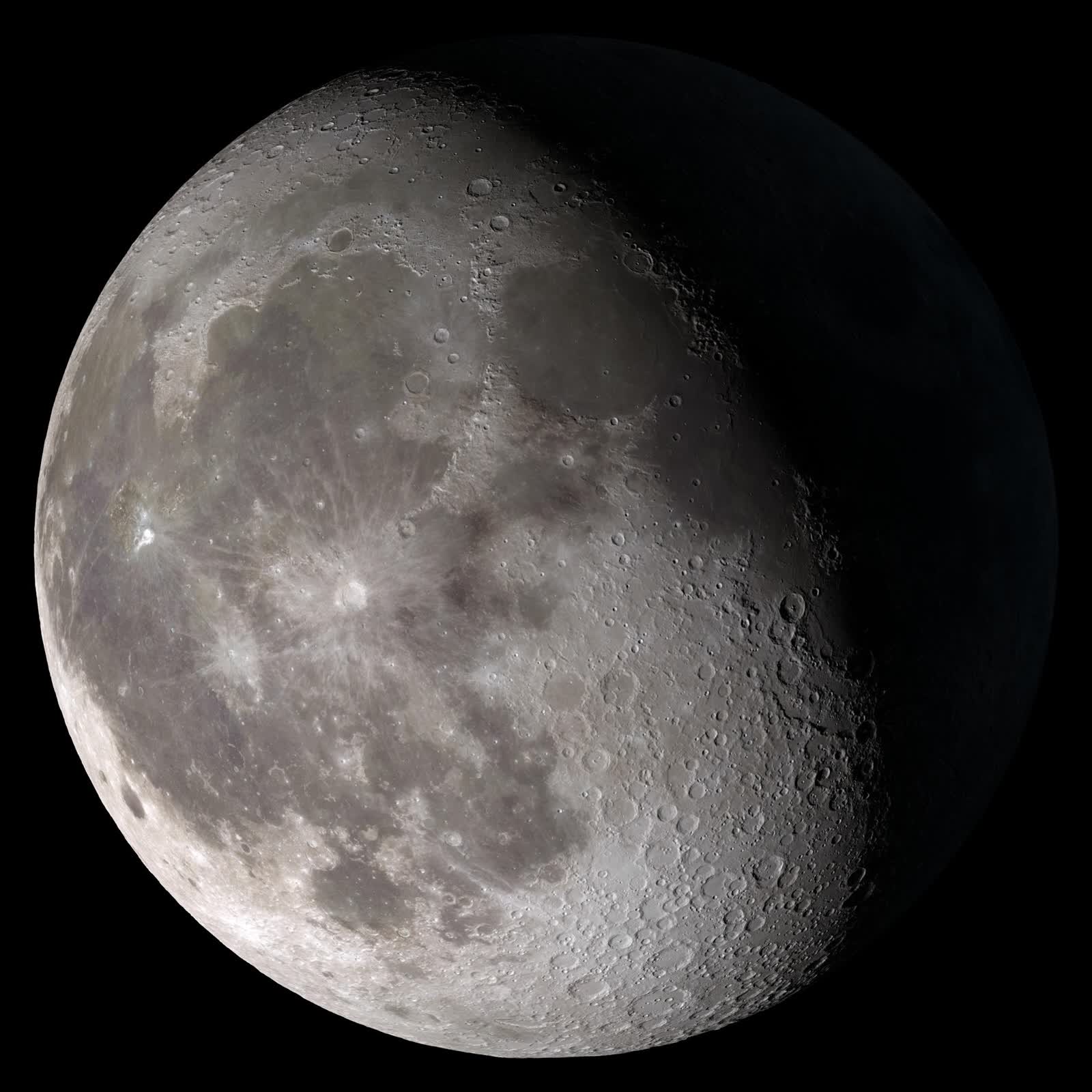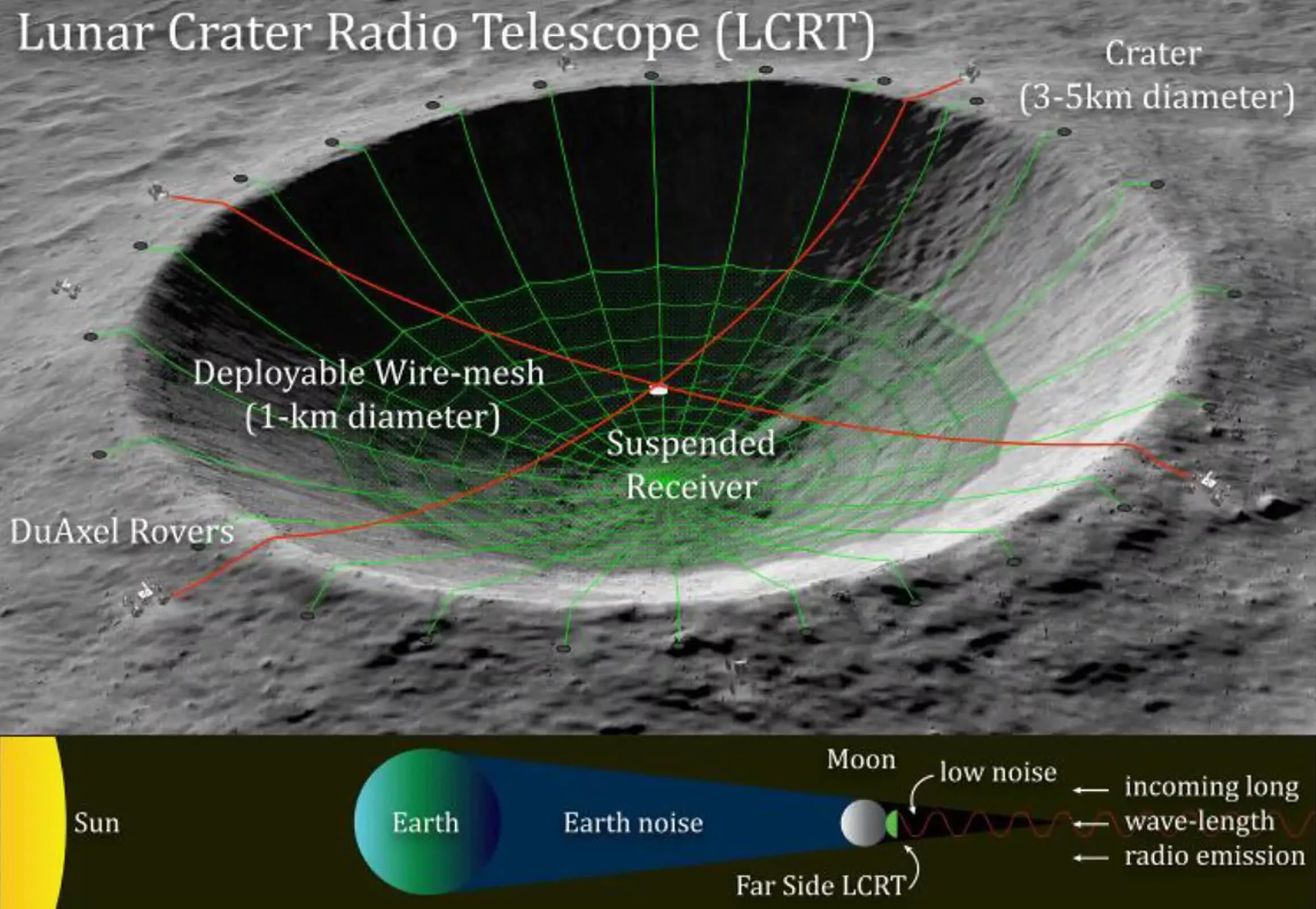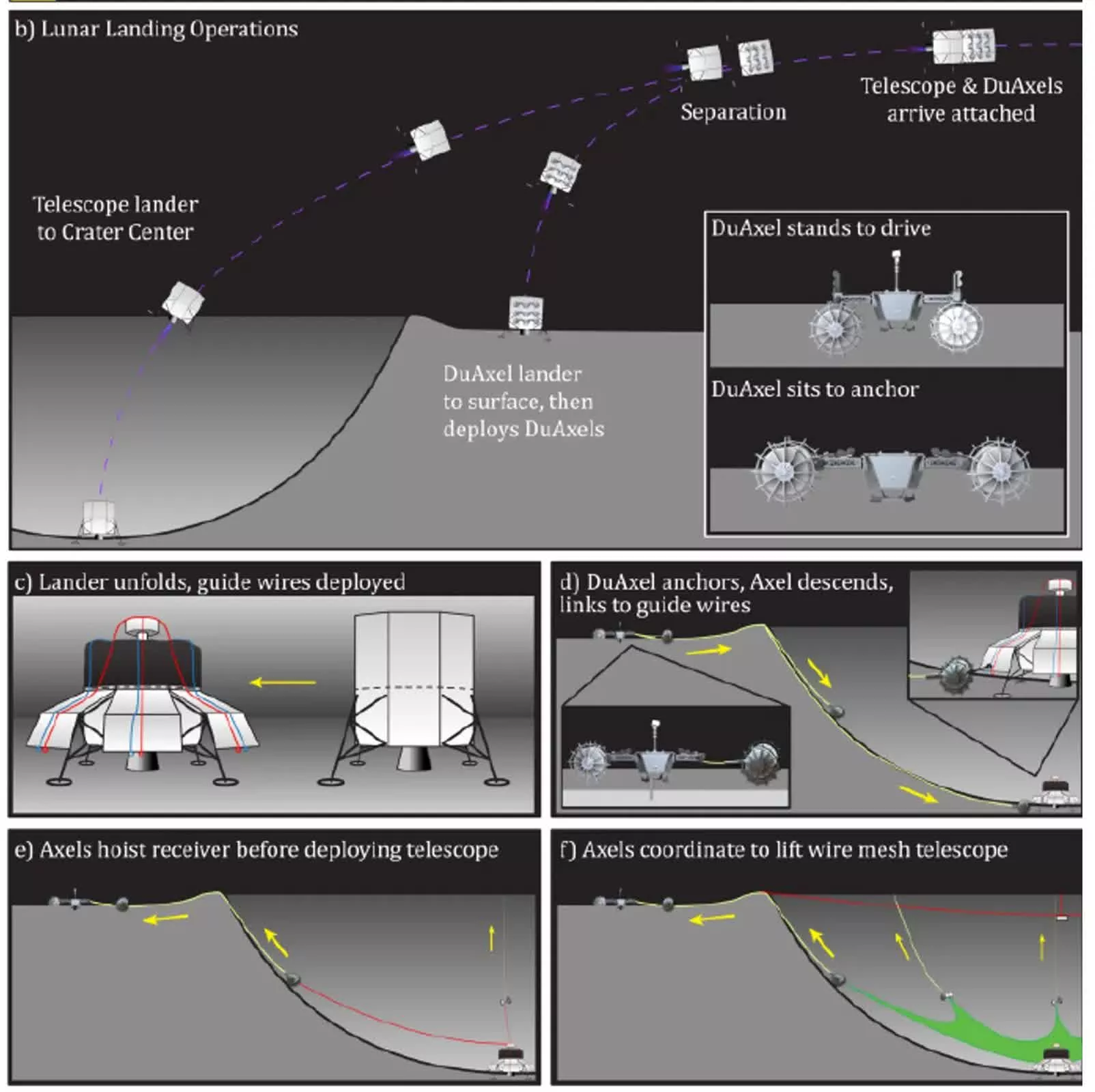Something to look forward to: The proposed Lunar Crater Radio Telescope would not replace the full spectrum of research conducted by Earth-based radio observatories, but it does represents a vital step toward preserving and expanding humanity's ability to explore the cosmos. As the population of satellites orbiting Earth continues to grow, the Moon's far side may soon become the last sanctuary for some of astronomy's most sensitive and important investigations.
NASA is advancing plans to construct a radio telescope on the Moon's far side – a location uniquely shielded from the ever-increasing interference caused by Earth's expanding satellite networks. This ambitious endeavor, known as the Lunar Crater Radio Telescope, envisions deploying a massive wire mesh reflector within a lunar crater.
The project's innovative design relies on advanced robotics to suspend the reflector using cables, and if development proceeds as planned, the observatory could be operational sometime in the 2030s. Current projections estimate the cost at over $2 billion.
The far side of the Moon offers an unparalleled environment for radio astronomy, being naturally protected from the relentless radio noise and light pollution that plague observatories on Earth. The recent surge in satellite launches, especially from private ventures like Starlink, has led to a dramatic increase in orbiting satellites.
Notional view of LCRT on the far side of the Moon.
This proliferation raises concerns among astronomers about space debris, light pollution, and, most critically, the leakage of radio-frequency radiation.
Such interference poses a significant threat to sensitive scientific instruments designed to detect faint signals from the universe's earliest epochs. Federico Di Vruno, an astronomer affiliated with the Square Kilometre Array Observatory, told LiveScience, "it would mean that we are artificially closing 'windows' to observe our universe" if radio astronomy on Earth becomes impossible due to interference.
The LCRT is being developed by a team at NASA's Jet Propulsion Laboratory, part of the California Institute of Technology. Since its initial proposal in 2020, the concept has progressed through several phases of funding from NASA's Institute for Advanced Concepts. The team is currently building a prototype for testing at the Owens Valley Radio Observatory in California.
Concept of operations for building LCRT.
Gaurangi Gupta, a research scientist working on the project, explained that preparations are underway to apply for the next round of funding. If successful, she told LiveScience, the LCRT could transition into a "fully-fledged mission" within the next decade.
The proposed telescope features a mesh reflector spanning approximately 1,150 feet – making it larger than the now-defunct Arecibo telescope, though not as large as China's FAST observatory. The team has already selected a preferred crater in the Moon's Northern Hemisphere for the installation, but the precise site remains confidential.
Although the concept of a lunar radio telescope dates back to at least 1984, technological advances have brought the idea closer to reality. One of the most significant obstacles facing the project, however, is its cost. Gupta noted that the latest estimate for building the LCRT stands at around $2.6 billion – a figure that presents challenges given NASA's current budgetary constraints.
Beyond providing a refuge from terrestrial interference, the LCRT would open new frontiers in astronomy by enabling the study of ultra-long radio waves – those with wavelengths longer than 33 feet. Earth's atmosphere blocks these frequencies, which are essential for investigating the universe's "cosmic dark ages," a period before the first stars formed.
"During this phase, the universe primarily consisted of neutral hydrogen, photons and dark matter, thus it serves as an excellent laboratory for testing our understanding of cosmology," Gupta said. "Observations of the dark ages have the potential to revolutionize physics and cosmology by improving our understanding of fundamental particle physics, dark matter, dark energy and cosmic inflation."
NASA has already begun experimenting with lunar radio astronomy. In February 2024, the ROLSES-1 instrument was delivered to the Moon's near side by Intuitive Machines' Odysseus lander, briefly collecting the first lunar radio data. However, as Gupta pointed out, the instrument's Earth-facing orientation meant that "almost all the signals it collected came from our own planet, offering little astronomical value."
Later this year, another mission aims to place a small radio telescope on the Moon's far side, further testing the feasibility of such observations.


